The 1997 Kyoto Protocol stipulated that by 2020, industrial processes should be at least 20 percent more efficient than they were in 1990. HEIDELBERG far exceeded this target, boosting efficiency by over 40 percent. This achievement can be seen in the comparison between the Speedmaster CD 102-6+L from 1990 and the current Speedmaster XL 106-6+L – energy consumption per 1000 sheets has been reduced from 13.8 kWh to 8 kWh.
HEIDELBERG achieved this improvement through pioneering innovations and by optimizing details. For example, the frequency-controlled sine synchronous drive achieves an efficiency rating of around 95 percent – 5 percent more than standard motors – thus cutting losses in half. Added to that, a number of drives offer energy recovery as an option, meaning additional consumers can harness the energy that is released when the brakes are applied to the motors.
The air supply of the Speedmaster has been considerably improved in terms of energy consumption. Having boosted its efficiency level from 35 percent to 70 percent, the energy yield of the AirStar Pro air supply cabinet is now twice as efficient as it once was. This can save 140,000 kWh per year (based on 36 million printed sheets). The highly efficient CombiStar Pro also helps reduce the energy costs associated with the cooling system for the central dampening solution supply – by as much as 50 percent. Furthermore, the DryStar Combination dryer and its patented round nozzles help you drive down your annual power consumption by a further 27,000 kWh (based on 36 million printed sheets). When it comes to peripheral units, HEIDELBERG has opted for water cooling, which is considerably more efficient than an air-conditioning or ventilation system. The pressroom stays cooler and the production environment is stabilized.
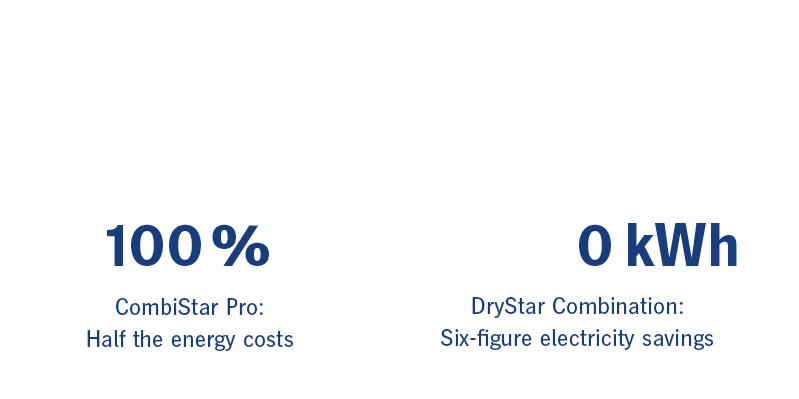

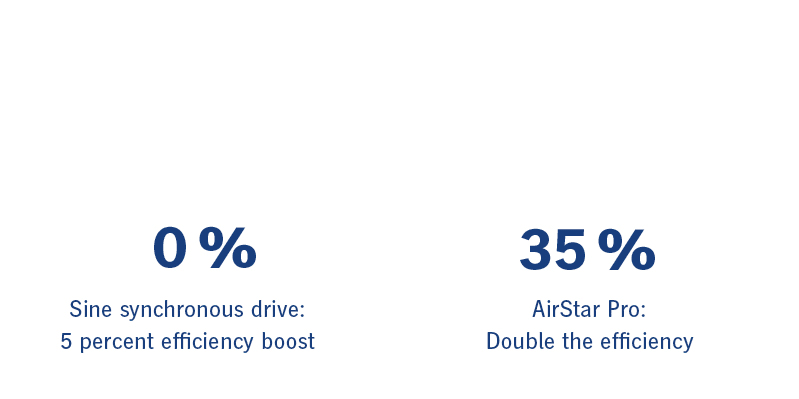

The latest innovation cycle at HEIDELBERG covers printing systems that utilize the push-to-stop philosophy to run production autonomously to the highest quality standards and pave the way to the smart print shop based on data-supported services. Energy efficiency also plays a key role in a digitally networked and highly automated print shop. However, there is one particular principle that comes into play with printing presses and sets them apart from other types of machine. An automobile, for example, uses more fuel or energy the faster it travels.
By contrast, a printing press has a basic level of energy consumption that covers the fundamental operating functions. When this value is exceeded, energy consumption increases in line with rising printing speed, but since the basic level of energy consumption is spread over more printed sheets, overall energy efficiency improves. This means a press is at its most efficient when a job is being printed at full speed and when, after that job, it either moves on immediately to the next job or switches to standby mode when there is nothing else to be printed (see tips and tricks).
There’s an old management adage that says you can’t improve what you don’t measure, and that explains why HEIDELBERG is adding another technological highlight to the Speedmaster XL 106. From April 2023, the press will be supplied with an energy measuring device as an optional add-on (only in Germany at first). This will enable users to permanently monitor the energy consumption of their press – measured in kilowatt-hours per 1000 sheets – from the control station (Press Center, Wallscreen). This read-out encourages operators to run their press energy efficiently – in other words, at maximum speed. Continuously displaying energy consumption is an improvement on previous performance displays that were not based on press throughput. The new energy measuring device will help bring economy and eco-friendliness into even closer harmony on the Speedmaster XL 106 – and deliver all the associated cost benefits.
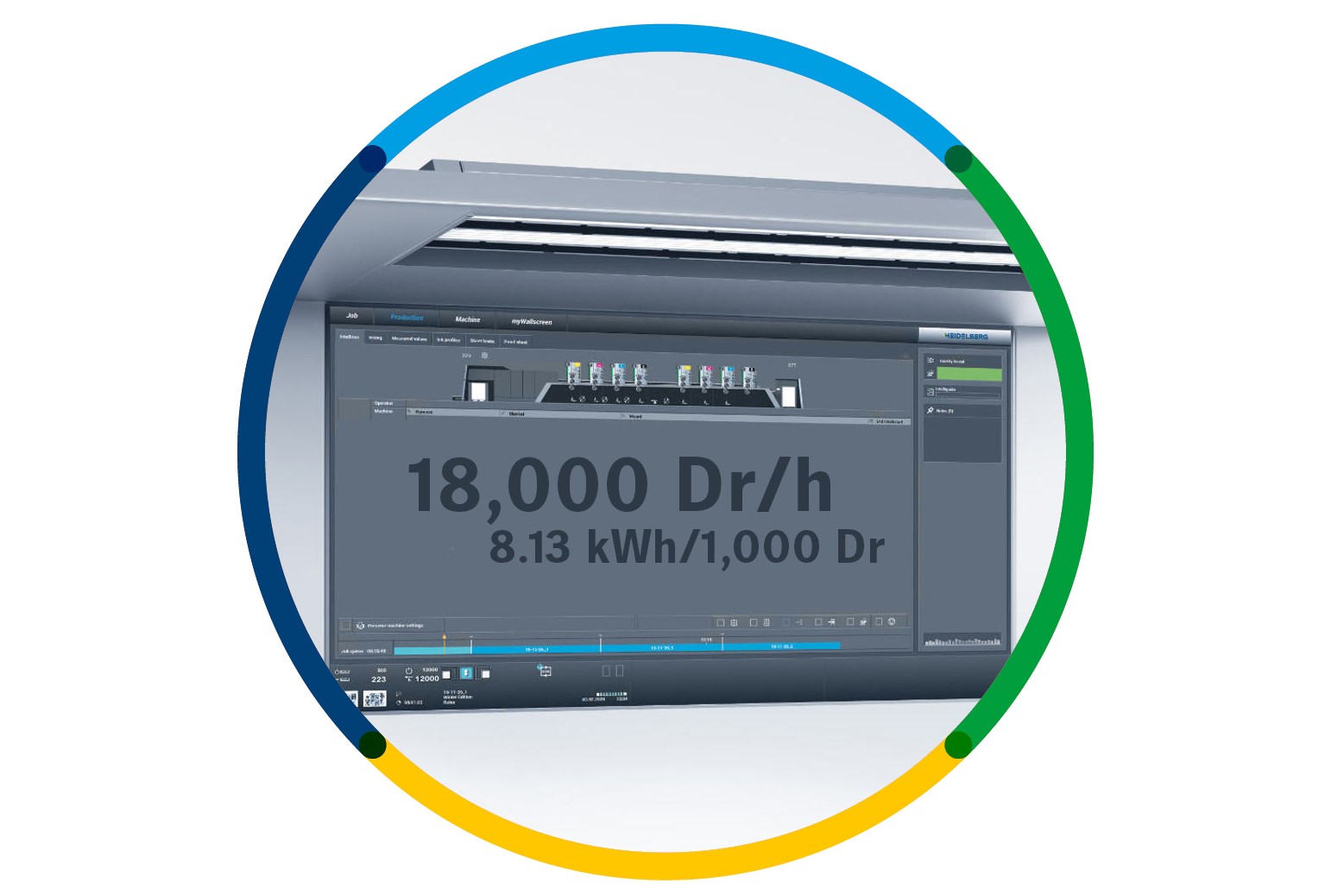

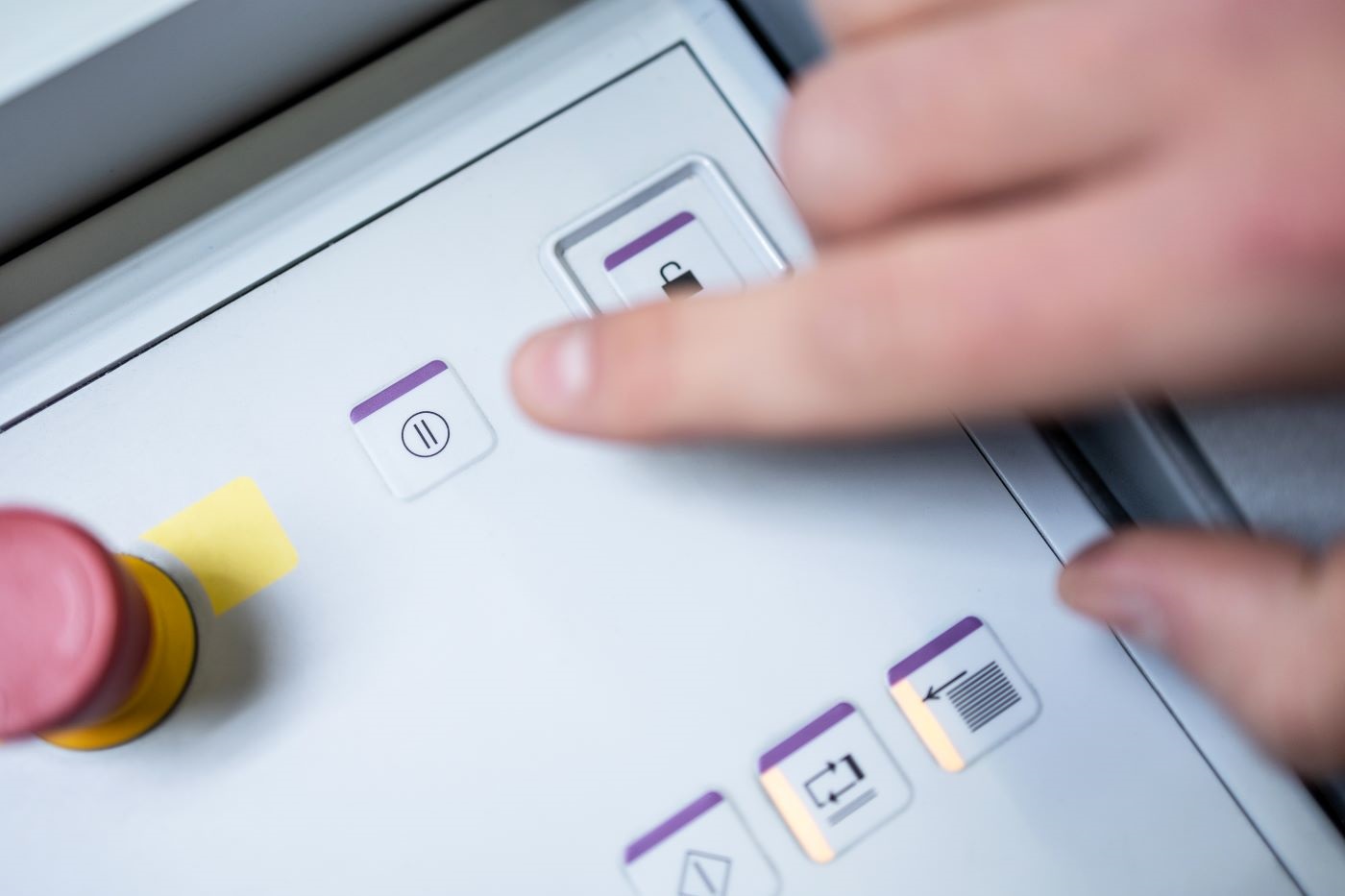
All printing presses from HEIDELBERG that have a control station (Press Center) are equipped with a standby function as another tool for enhancing energy efficiency. The button for activating this function, which is unique in the market, can be found to the right of the emergency stop button on the control station. When the operator presses the standby button, the peripheral units and various assemblies in the press switch to an energy-saving mode.
The standby function can save a great deal more energy compared to idling and readiness modes. Depending on the type of press you are running, activating this function for just one hour every day can save you more than the equivalent of the average household’s energy consumption (3600 kWh) every year.
We recommend you use the standby function even during short breaks in production because the press can be ready for production again very quickly once it is time to start printing again.
Every pressroom has some scope for reducing energy consumption. Trust in our experience and get in touch with us. Our experts can help you boost your energy efficiency and therefore also your competitiveness.

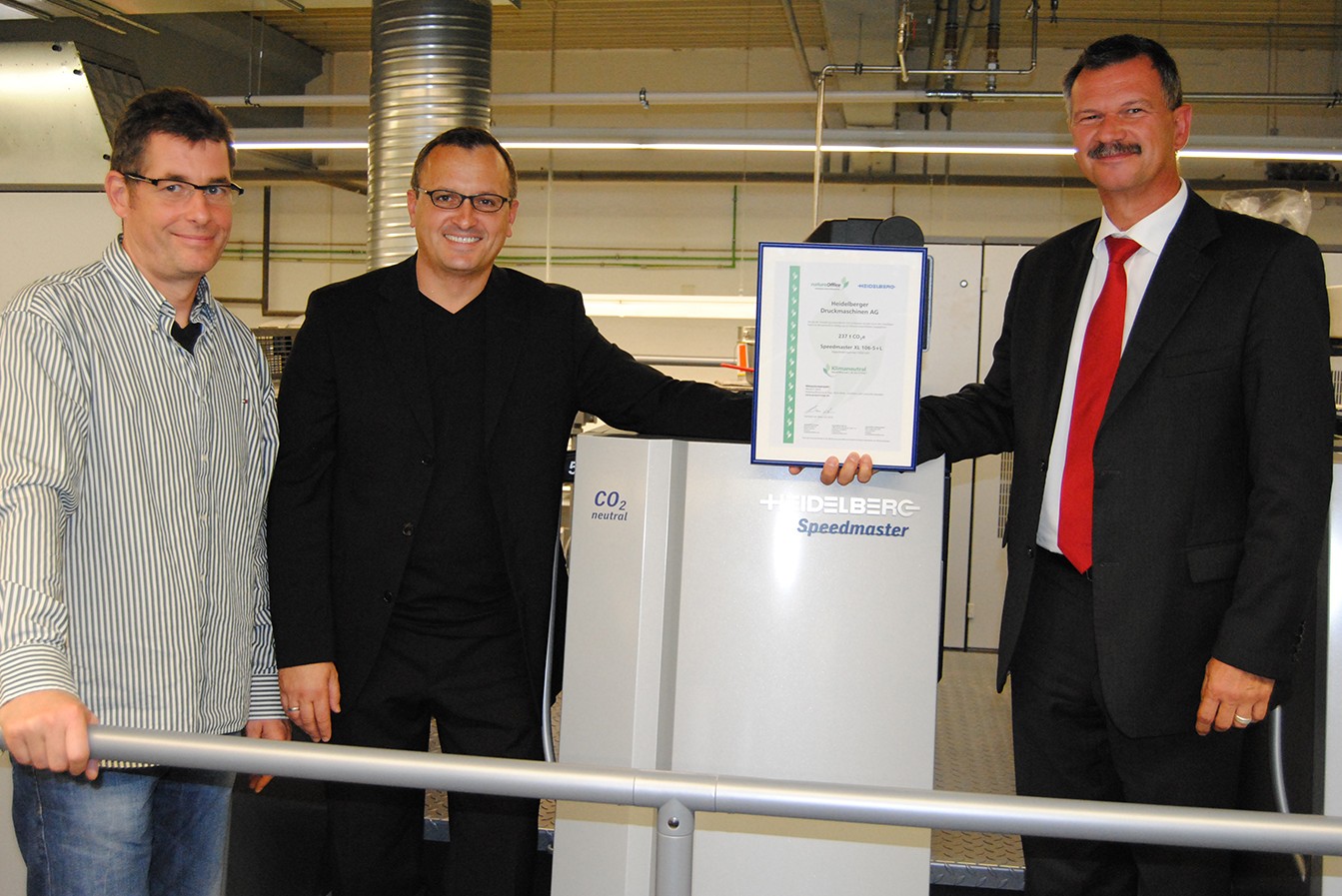
Today, climate protection is a key success factor and a selling point for businesses. Print shops which have acquired the "Equipment CO₂-compensated" certificate from HEIDELBERG can demonstrate their environmental commitment to their customers in multiple ways:
